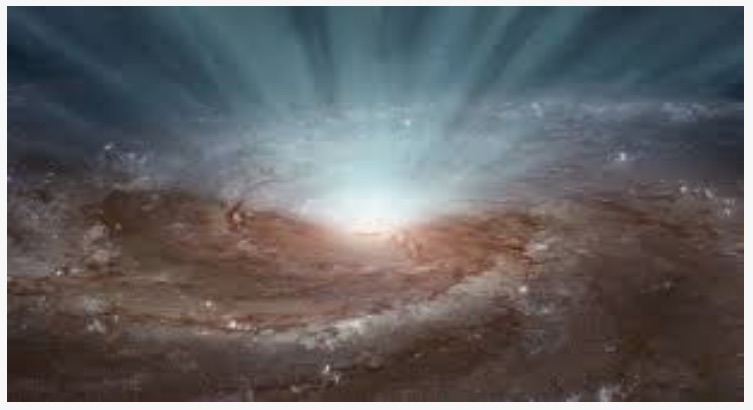 Posted by: P. LaViolette
Posted by: P. LaViolette
September 24, 2020
In 1983, I was the first astronomer to propose the existence of galactic superwaves: volleys of cosmic rays episodically ejected from active galactic cores capable of penetrating entirely through a galaxy’s disc and well beyond. The essence of this theory was first announced in my Portland State University Ph.D. dissertation and later in 1987 in a journal paper. Although my dissertation focused mainly on the effects of superwaves on Earth coming from the center of our own Galaxy, it also proposed that such cosmic ray “tsunami’s” are common phenomenon that takes place throughout the universe in all galaxies whose cores have erupted into an active state. Over the years findings have come out that have repeatedly validated this theory; see list of confirmations (Page I) and (Page II).
Now after 37 years, astronomers have published results made with a new Hubble Telescope camera that provides further validation for the superwave theory. A team of astronomers led by Nahum Arav, physics professor at Virginia Tech, has discovered the most energetic outflows ever witnessed in the universe. Looking at the far ultraviolet data from the Hubble Space Telescope, Cosmic Origins Spectrograph (COS), they found that active galactic nuclei were producing immense high speed outflows of highly ionized gas in one galaxy (SDSS J1042+1646) traveling as fast as 7% of the speed of light. Moreover over the span of 5 years this outflow was found to accelerate by 0.5c (1500 km/s) seemingly driven to increasingly high velocities by the energetic cosmic ray blast emerging from the quasar. Quasars are the brilliant, compact galactic cores that can shine 1,000 times brighter than their host galaxies containing hundreds of millions of stars.
Unexpectedly, they also found that these high velocity flows penetrate substantial distances through a galaxy, as much as 1600 parsecs (5000 light years) in one case and over 3000 parsecs (9800 light years) in another. According to Nahum Arav, quoted by phys.org, “The outflows emanate from quasars and tear across interstellar space similar to tsunamis on Earth, wreaking havoc on the galaxies in which the quasars reside.” This is exactly the scenario that I had proposed in 1983 when I formulated the superwave hypothesis, namely that the cosmic ray volleys emitted by an erupting galactic core typically travel long distances through its host galaxy affecting stars and solar systems as it advances. The COS observations look at the interstellar gas that this cosmic ray volley ionizes and propels outward. They conclude that these winds are so violent that they would inhibit the formation of stars in a galaxy and thereby limit its size.
Their findings appear in the March 2020 issue of Astrophysical Journal Supplements, and also one of their papers can be downloaded at: https://arxiv.org/abs/2003.08688. They report observing outflows having kinetic energy luminosities of 1046 to 1047 erg/s in the galaxies they studied. By comparison the Galactic core cosmic ray outburst modeled in my 1983 dissertation postulated a luminosity of 1048 erg/s.
For an overview see:
https://phys.org/news/2020-03-team-quasar-tsunamis-capable-stars.html
These findings relate to those announced 4 years earlier of the ultrafast wind emanating from the core of Seyfert galaxy IRAS17020+4544 described in the Superwave Forum (https://starburstfound.org/superwaveblog/?p=379).
Dr. LaViolette are you aware that for some time now I and presumably everyone else have been unable to read peoples comments on this website?
Why haven’t you addressed this glitch or at least acknowledged it?
I will have the webmaster look into the matter.
Paul ? I wonder would they like it if you went to them: “I told you so !”? 😄🤣🤣🤣
I did write to them, and they ignored my email. Received no answer.